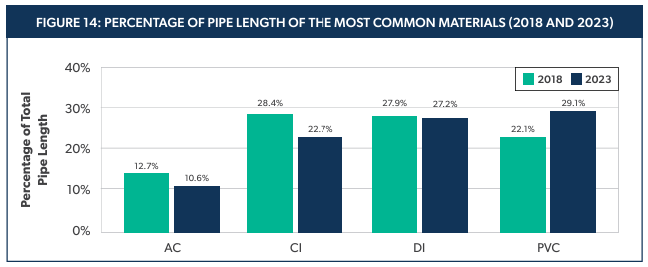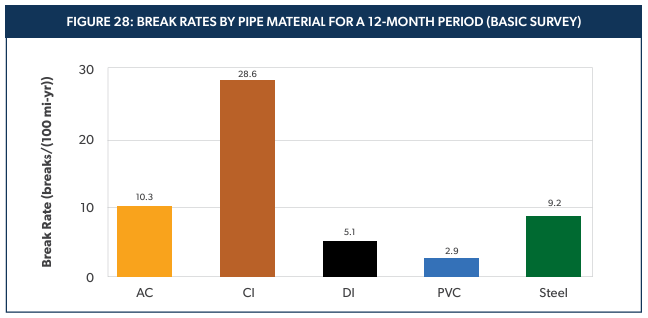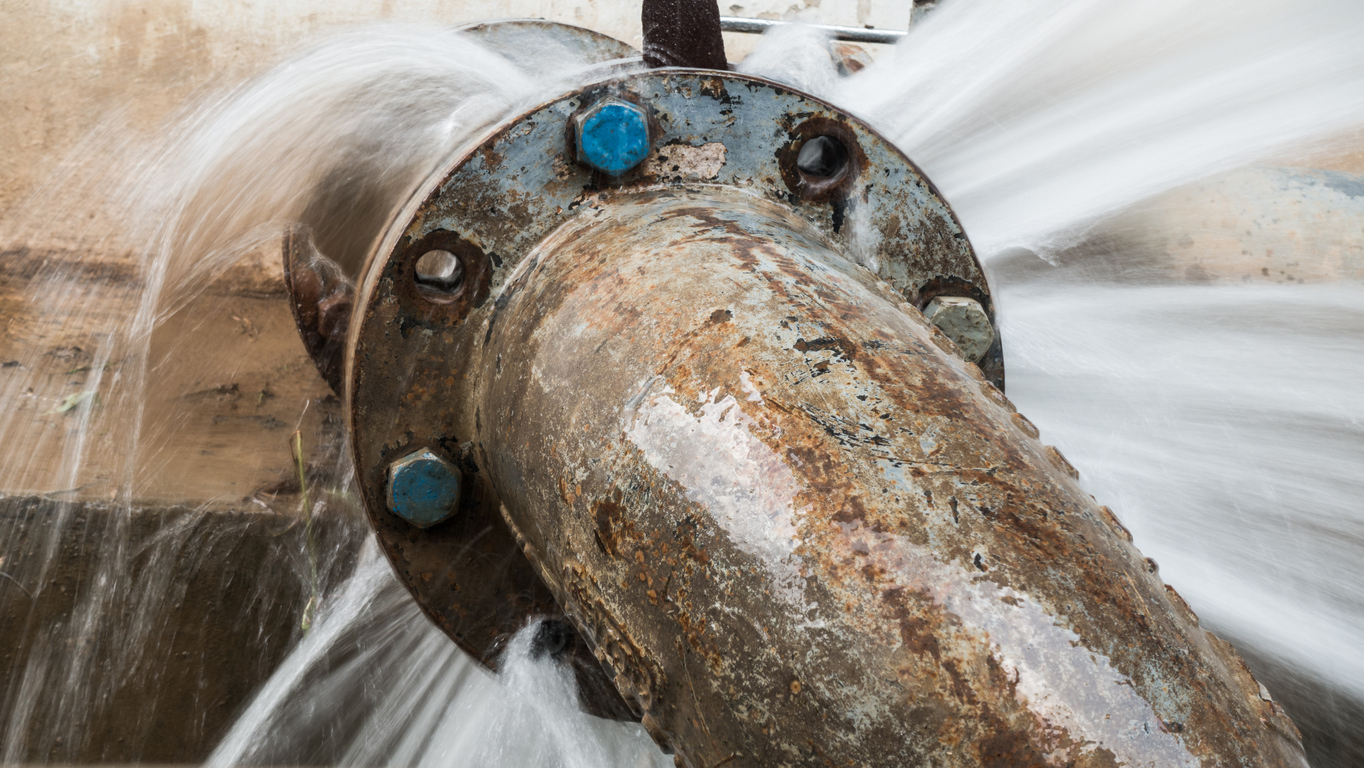This website uses cookies so that we can provide you with the best user experience possible. Cookie information is stored in your browser and performs functions such as recognising you when you return to our website and helping our team to understand which sections of the website you find most interesting and useful.
News
PVC is a Solution for Water Conservation: Water Mains
Every year, the American Water Works Association estimates the United States loses more than ~2.1 trillion gallons of treated water. This is primarily due to worn-down and aging infrastructure. For example, old metal water mains failing and poorly optimized irrigation systems are just two examples of a sea of ways in which we lose billions of gallons of water daily.
Something must be done to protect our finite amount of American water. But what?
The answer is to update our infrastructure with products built to last.
We must prioritize and modernize our crumbling infrastructure. This article series will look at the two examples listed previously – water pipes and irrigation – and paint a picture of systemic failure on the part of the United States due to its lack of care in these areas. If the United States wants to fix its growing water loss problem, it must turn to PVC – like so many towns and cities around the country have already done – to reduce the amount of water lost annually.
Water Mains
More than 6 billion gallons of treated water are lost daily across the United States due to water main breaks alone. This amounts to tens of billions of dollars in repairs (not to mention the copious GHG emissions that come as a result of these repairs) and billions of gallons of water lost – every single day. Breaks also create wasted energy from all that lost treated clean drinking water.
We’ve written at length about the sustainable aspects of PVC pipes, like their lower carbon emissions compared to other pipes, but that’s not the primary purpose of this article. This article is about water conservation. And much like how PVC pipe is the best choice for water infrastructure when considering GHG and carbon emissions, it is also by far the best choice when considering water conservation.

According to a Utah State University study released earlier in 2024, the four most common materials used in water mains (which make up ~91% of all water mains) are asbestos cement, cast iron, ductile iron, and PVC. The study found 42,365 feet of asbestos cement, 90,657 feet of cast iron, 108,670 feet of ductile iron, and 116,345 feet of PVC water mains currently in service in North America. The break rates of those pipe materials are:
- Asbestos Cement: 10.3
- Cast Iron: 28.6
- Ductile Iron: 5.1
- PVC: 2.9
 The numbers are obvious – PVC pipe is the most dependable pipe for water mains and has, by a large margin, the fewest breaks relative to the number of miles serviced. Countless towns and cities have experienced breaks from aging metal pipes and decided to trust the proven alternative in PVC. If governments want to make real progress toward reducing the amount of treated water lost annually, replacing all outdated water mains with state-of-the-art PVC and it’s break rate of 2.9 would have massive benefits.
The numbers are obvious – PVC pipe is the most dependable pipe for water mains and has, by a large margin, the fewest breaks relative to the number of miles serviced. Countless towns and cities have experienced breaks from aging metal pipes and decided to trust the proven alternative in PVC. If governments want to make real progress toward reducing the amount of treated water lost annually, replacing all outdated water mains with state-of-the-art PVC and it’s break rate of 2.9 would have massive benefits.
There is some positive to the Utah State University report – which is that the rate of pipe breaks was slightly slower than in the 2018 study. The research team found that, in 2018, there was an average of 14 pipe breaks each day. That number decreased to 11.1 in the 2023 study – which “may indicate that more utilities are applying asset management techniques and replacing pipe with the highest break frequency.” This is further proved by the increase in PVC’s market share from one report to the next.
However, 11.1 water main breaks a day is still far too many. The report estimates that each break costs ~$10,000, and as long as we still have old, aging pipes in the ground that are made from material that is prone to breaking – we’re still going to lose billions of gallons a day to water main breaks. Replacing these lines with PVC is the proven way to limit water loss.
The data is clear – if the United States wants to reduce the amount of usable water lost, it must turn to PVC pipe. With the lowest break rate out of all pipe materials, updating our water infrastructure with PVC pipe would save the country billions of dollars in the long run due to reduced repair costs and a lack of lost water.


